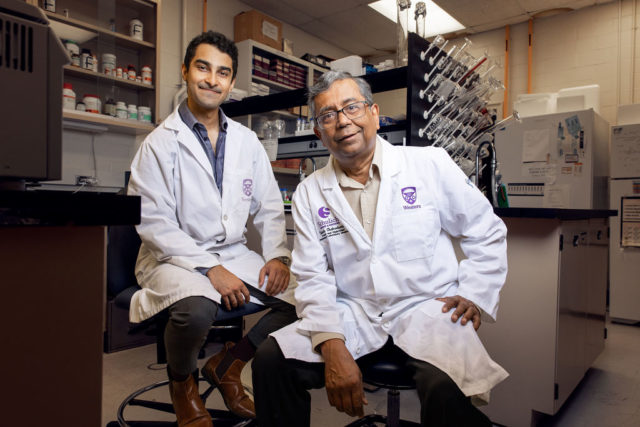Growing up, Dr. Subrata Chakrabarti watched his father struggle with Type 2 diabetes. The experience led him to medical school, where he set his sights on gaining a deeper understanding of the disease, its complications and effective treatments.
“If we can learn more about the pathways that lead to the development of a disease, we can develop more effective treatments,” says Chakrabarti, a physician and professor at Western’s Schulich School of Medicine & Dentistry.
During the past three decades, Chakrabarti’s expertise and passion for studying disease at the molecular level have fueled breakthrough research in diabetic retinopathy treatment.
Chakrabarti and his team have made significant inroads in what they hope will result in more efficient and early diagnosis of retinal damage, as well as the development of potential treatments for diabetic patients.
In one of many offshoot projects, Chakrabarti’s lab focused on the damage sustained by endothelial cells, which line blood vessels in the retina (nerve tissue in the back of the eye), when the blood in the vessel has high glucose levels. The damaged blood vessels bleed, causing other tissue damage, subsequently leading to blindness.
In patients with diabetes, high glucose levels in the endothelial cells activate a complex network of non-coding RNAs, which subsequently impacts protein production inside the cell. Non-coding RNA molecules have been recently discovered and have a major role in regulating damaging protein production. They are also known as ‘dark matter genome’, explains Saumik Biswas, PhD’20, who worked in Chakrabarti’s lab as a graduate student. He has since founded Tenomix, an early-stage medical technology company, where he is now CEO.
“The problem is that these cells are not accustomed to the large amount of diabetes-related protein molecules being produced, which starts a destructive chain reaction that can lead to cellular dysfunction and tissue damage,” he explains. “When such damage occurs in the retina, a condition we call diabetic retinopathy, blindness and other complications result.”
While most diabetes literature and treatments focus on targeting the proteins that wreak havoc in a diabetic patient, Chakrabarti’s lab remains intent on tackling the mechanisms even closer to the root of the problem.
“We’re now focused on how non-coding RNAs respond in high-glucose environments,” Chakrabarti says. “Why are they producing these proteins that the cell does not need? Ideally, if you can identify and then block a specific non-coding RNA, you can block multiple abnormal changes in the cell.”
Although many research teams are examining the role of non-coding RNAs in cancer care and diagnosis, few have managed to translate this foundational research into treatments for diabetic patients.
One of the ongoing projects at Chakrabarti’s lab involves collecting blood from both diabetic and non-diabetic patients to compare the levels of nine distinct non-coding RNA in each. By analyzing the behaviour of these non-coding RNAs in both high-glucose and normal glucose environments, the researchers can start to pinpoint some of the early indicators that a patient may develop tissue damage.
In the past, therapies for diabetic retinopathy have focused on reactive rather than preventative treatment. “With existing diagnostic methods, it’s challenging to identify a problem until major tissue damage has already happened,” explains Biswas. “Our ultimate goal is to provide patients with something that can help prevent damage and grant them a better quality of life.”
